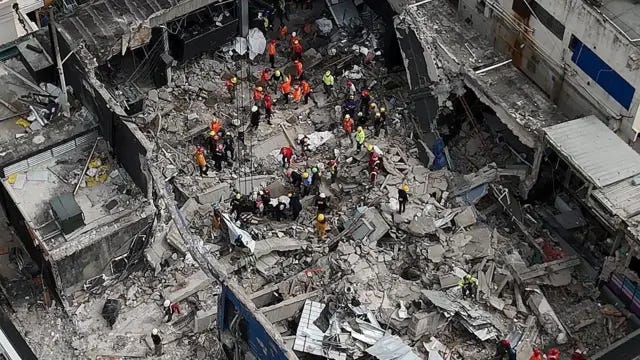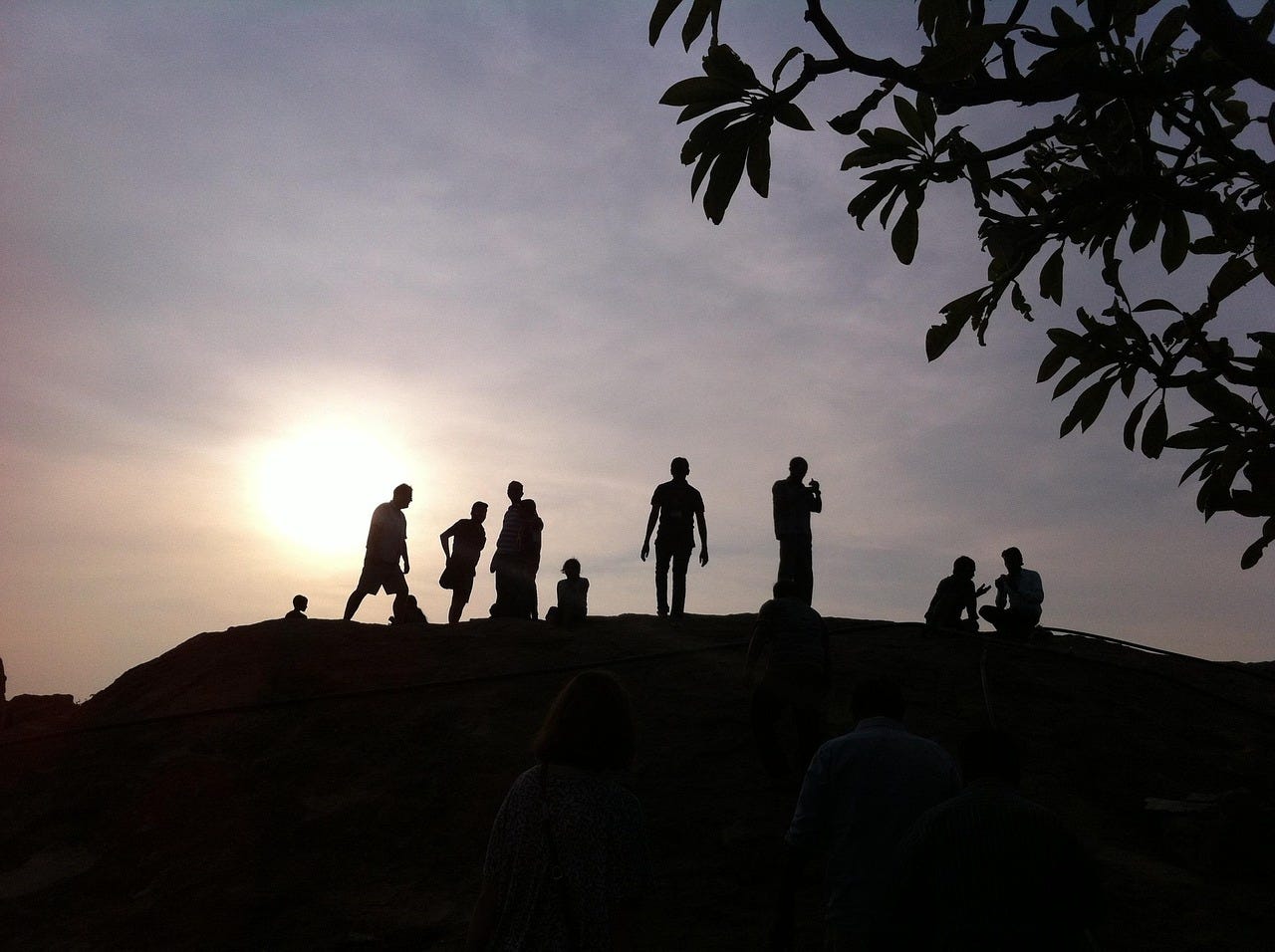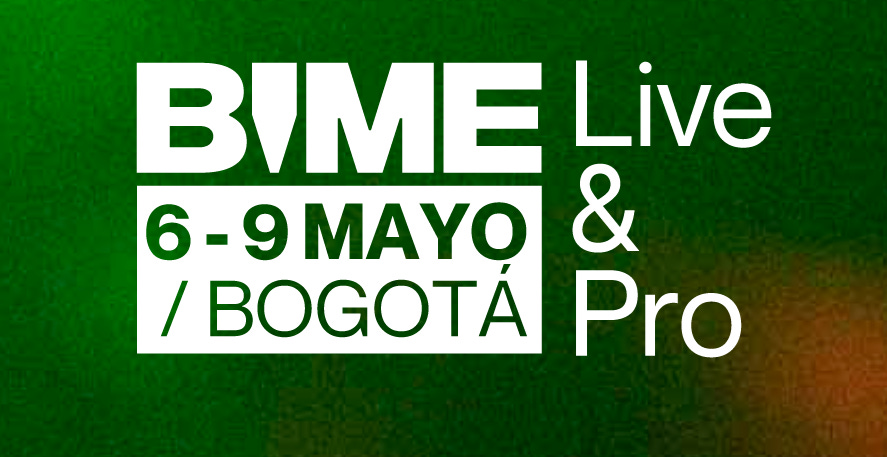Tragedy, Bad Bunny, BIME: Notes from a Shaken Music Ecosystem
Plus What's Ahead in Latin Music and Culture
In a month that began with both rhythm and reckoning, the Latin American music world is confronting its brightest visions and darkest realities. Two tragic incidents — one at Mexico City’s AXE Ceremonia and another at the legendary Jet Set club in Santo Domingo — have reignited urgent conversations about safety, accountability, and the true cost of spectacle. Meanwhile, artists like Bad Bunny are pushing for deeper connection and cultural reverence, as seen in his recent Tiny Desk performance, and industry giants prepare to gather once again in Bogotá for BIME, with names like Zeta Bosio and Albina Cabrera leading the charge. The scene is alive, but the stakes have never felt higher.
On Stages and Shadows: When the Show Shouldn’t Go On

Two devastating tragedies have shaken the live music world this month—one in Mexico City, the other in Santo Domingo. Both serve as harsh reminders that beyond the lights, the stages, and the spectacle, real lives are on the line. And the cost of overlooking that truth is now unbearably clear.
In Mexico City, AXE Ceremonia Festival—once a beacon of alternative culture—became the scene of a fatal accident when an unregistered structure collapsed, killing two press photographers: Berenice Giles Rivera and Miguel Ángel Hernández. Rather than bystanders, these were people doing their jobs, contributing to the very machinery that makes festivals possible, often for far too little in return.
The public’s focus has quickly turned to Grupo ECO, the media and event conglomerate behind the festival, and questions are rightfully piling up: Who greenlit that structure? Why wasn’t the show paused after the incident? Why did it take seven hours for organizers to acknowledge the deaths?
Grupo ECO markets itself as a “cultural ecosystem”, promising positive change through art and music. But no amount of brand storytelling or immersive activations can hide the fact that safety was neglected—and that neglect cost lives. You can’t build cultural capital on unsafe labor conditions and expect to keep your credibility intact. No matter how cool your visuals are or how stacked your lineup may be, accountability isn’t optional.
Meanwhile, in the Dominican Republic, an even darker tragedy unfolded. During a packed “Lunes Bailable” at Jet Set, a legendary nightclub in Santo Domingo, the ceiling collapsed mid-performance, killing over 220 people, including beloved merengue icon Rubby Pérez. Survivors described a nightmare scenario: debris falling seconds after the artist’s final words, emergency exits choked with rubble, and a stampede of panicked bodies trying to escape.
Besides the structural failing, this was a collapse of responsibility, proper inspections, planning and foresight. Jet Set had been a cornerstone of Dominican nightlife for over 50 years, and its legacy makes this even more painful. Among the deceased were celebrated athletes, artists, and political figures—a stark reminder that tragedy doesn’t discriminate when profit comes before preparation.
What links both of these events isn’t just the scale of the loss, but the silence that preceded it. These are symptoms of a system where cutting corners is normalized, where crisis communication is an afterthought, and where the illusion of control often masks total chaos behind the curtain.
It’s tempting in the entertainment world to focus on the next big lineup, the immersive brand partnerships, the fiery visuals. But the basics will always matter: safety, transparency, and respect for the people who make live music possible—especially those who don’t stand under the spotlight. Photographers. Technicians. Staff. Fans.
If your festival can’t guarantee safety, it shouldn’t happen. If your venue can’t pass an inspection, close the doors. If your communication strategy is silence, then you're part of the problem. Culture matters, but not more than lives.
We’ll be keeping an eye on how both investigations unfold. And we’ll continue to ask the uncomfortable questions that come with loving this industry deeply enough to want it to do better.
Benito Unplugged: A Tiny Desk Full of Heart and Heritage
Leave it to Bad Bunny to take the most stripped-down stage in music and turn it into a full-blown love letter to Puerto Rico — with cuatros, tiples, and plenty of charisma. From the very first notes of “Pitorro de Coco” (which we spotlighted in our December 2024 New Music Vault), this Tiny Desk Concert was a perfectly timed performance.
Of course, Benito’s vocals aren’t exactly his strong suit — and they never have been. He’s never claimed to be a technical singer, and his genre doesn’t call for operatic range anyway. He’s a rapper, a stylist, a storyteller. And while there were a few pitchy moments here and there, none of that really mattered. His charisma, presence, and above all, the tight musicianship of the band more than made up for it. In a way, it added to the charm.
Throughout the performance he was cracking jokes, spinning stories about street rehearsals in Washington D.C., even teasing that he met his pianist Luis Amed Irizarry on a random sidewalk. It all seemed very spontaneous, and the vibes were magnetic. His charm filled the room, but so did his intention: this was a set rooted in tradition, community, and sound.
The band? Flawless. Featuring highly talented musicians such as Luis Sanz and Fabiola Méndez (whose own Tiny Desk was one of the best from last year’s Latin Music Month), plus Krystal Santana on bass, Julito Gastón on congas, and an overall top-notch lineup of Puerto Rican talent — the chemistry was undeniable. This was a group playing together, not just backing an artist.
What stood out most, though, was how naturally Bad Bunny let the music breathe. With a setlist pulled from his latest album Debí tirar más fotos, he didn’t try to replicate the bombast of his arena shows. Instead, he leaned into textures — cuatros, maracas, güiro — creating space for Puerto Rican folklore to speak louder than any pop hook.
In many ways, it felt like a reset. A version of Benito that’s looking past the unprecedented spotlight from the days of his blockbuster 2022 record Un Verano Sin Ti, toward something a little deeper and more connected. And if this is the direction he’s headed, we can only hope to catch him on a stage soon, backed by this same powerhouse crew, letting tradition and talent lead the way.
BIME Bogotá 2025: A Bridge Between Worlds, Back in the Capital
BIME is back in Bogotá — and once again, it's bringing the kind of industry energy we constantly crave in this part of the world. From May 6 to 9, the capital will host a vibrant mix of panels, showcases, and keynotes designed to spark conversations, forge connections, and rethink the future of Ibero-American music.
The programming is stacked. From heavyweights like Tokischa, Luísa Sonza, and Silvana Estrada, to industry-defining voices such as Rebeca León, Leila Cobo, and AJ Ramos — it’s the kind of lineup that balances artistic vision with real-world strategy. Albina Cabrera, a favorite around here for her sharp curatorial sense and work with KEXP, will also be present, bringing her usual depth and authenticity to the table.
And for those of us whose love of music has been deeply shaped by mythical Argentine rock band Soda Stereo, the presence of Zeta Bosio is especially meaningful. Seeing a legend of that magnitude step into a space that mixes grassroots energy with institutional vision, is the kind of full-circle moment that gets us genuinely excited about BIME's approach to intergenerational dialogue.
It’s not all panels and roundtables though — BIME Live is bringing the action to Bogotá’s nightlife with free (but limited-capacity) showcases across venues like Matildelina, La Casa de Donovan, and El Pepino. Expect names like Luis Eduardo Acústico, Simpson Ahuevo, Esteban Rojas, BROKIX, Lucas Hill, Raquel, Superlitio, Rap Bang Club, Zeballos & Knak, Vale Acevedo, plus several other rising voices from across the board.
We’ll be on the ground covering all of it — the talks, the talent, the behind-the-scenes shifts in how Latin music is being built for the future, and the blueprints being drawn for how this industry could evolve — more thoughtful, more collaborative, and more connected across borders.
Full dispatch coming soon on this tribune. Stay tuned.
Pacífico Maravilla: Nidia Góngora’s Voice, Rooted and Rising
Few voices in contemporary Colombian music carry as much weight, depth, and reverence as Nidia Góngora. Whether fronting Canalón de Timbiquí, collaborating with Quantic or Ondatrópica, or lifting ancestral sounds into global consciousness, Nidia has been a pillar of Afro-Colombian folklore for well over a decade. Now, for the first time in her career, she steps into the spotlight as a solo artist.
This Saturday April 12, she presents her debut album Pacífico Maravilla live at Teatro Jorge Eliécer Gaitán — and it promises to be one of the most moving shows of the season.
More than a record, Pacífico Maravilla is a healing journey. Conceived as a tribute to her roots in Timbiquí, it’s a meditation on loss, faith, family, and the quiet beauty of daily life on Colombia’s Pacific coast. Musically, it’s rich in tradition — and sonically expansive. Nidia worked with a global team of producers and arrangers including D'jamel Kady (Algeria), Jake Savona (Australia, of Havana Meets Kingston), Alexis Play, and Christian Salgado (Bombo Records). With over 25 musicians involved, plus engineering by Kiko Castro (13x Latin Grammy winner) and Felipe Tichauer (21x Latin Grammy winner), the album is as refined as it is rooted.
This isn’t a glossy pop spectacle. Expect something deeper.
This concert is about storytelling through marimba, cununos, and voices that carry the spirit of the mangroves. It’s an invitation to feel the weight and wonder of a land that sings even through sorrow. In a musical landscape that often prizes volume over substance, Pacífico Maravilla offers a rare kind of quiet power. It’s a homecoming, and a moment of recognition for one of Colombia’s most vital voices. If you care about music that moves with meaning, you won’t want to miss it.
It’s easy to be swept away by the headlines — whether festival lineups, tragic losses, or viral performances. But underneath it all, the spirit of this moment lies in what’s being asked of the industry: to grow up, speak out, and step up. From the stages of NPR to the roundtables of BIME and the streets of major cities in Latin America, the message is clear — we need safer, more intentional spaces. And we need artists, organizers, and fans who understand that culture is more than content. It’s community. Let’s not forget that.
Stay tuned for more coverage, conversations, and cultural dispatches.
Until then, keep the rhythm alive!







